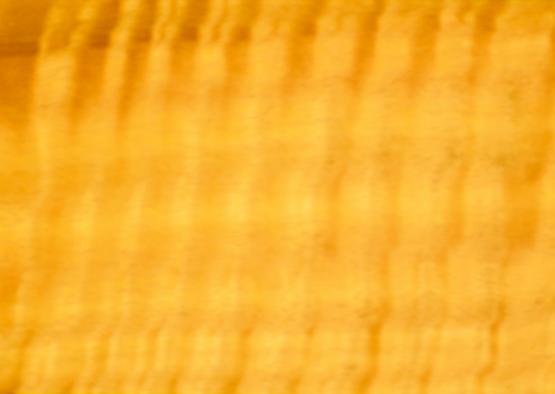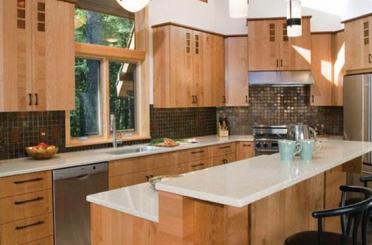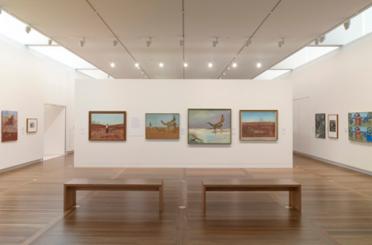Southern blue gum is a widely forested Australian hardwood species. Its timber products are readily available and suitable for flooring, furniture and a range of general construction applications.
Eurabbie, Tasmanian Blue Gum, Maiden's Gum, Gippsland Blue Gum
Eucalyptus globulus

Shrinkage
| Very Low | Low | Medium | High | Very High | |
|---|---|---|---|---|---|

|

|
||||
Tangential : |
14.40%
|
||||
Radial : |
6.90%
|
||||
Unit Movement Tangential: |
0.39%
|
||||
Unit Movement Radial: |
0.26%
|
Strength Group

Very High |
High |
Reasonably High |
Medium High |
Medium |
Reasonably Low |
Low |
Very Low |
||
Unseasoned: |
S1 |
S2 |
S3 |
S4 |
S5 |
S6 |
S7 |
S8 |
|
|---|---|---|---|---|---|---|---|---|---|
 |
|||||||||
Seasoned: |
SD1 |
SD2 |
SD3 |
SD4 |
SD5 |
SD6 |
SD7 |
SD8 |
|
 |
Stress Grade

| Structural No. 1 |
Structural No. 2 |
Structural No. 3 |
Structural No. 4 |
Structural No. 5 |
|
Unseasoned: |
F17 |
F14 |
F11 |
F8 |
F7 |
Seasoned: |
F34 |
F27 |
F22 |
F17 |
F14 |
Density per Standard

Seasoned: |
970kg/m3
|
|---|---|
Unseasoned: |
1140kg/m3
|
Joint Group

Very High |
High |
Reasonably High |
Medium |
Low |
Very Low |
|
Unseasoned: |
J1 |
J2 |
J3 |
J4 |
J5 |
J6 |
|---|---|---|---|---|---|---|
 |
||||||
Seasoned: |
JD1 |
JD2 |
JD3 |
JD4 |
JD5 |
JD6 |
 |
Colour

| White, yellow, pale straw to light brown | Pink to pink brown | Light to dark red | Brown, chocolate, mottled or streaky | |
 |
||||
Mechanical Properties
Modulus of Rupture - Unseasoned: |
84
|
|---|---|
Modulus of Rupture - Seasoned: |
146
|
Modulus of Elasticity - Unseasoned: |
15
|
Modulus of Elasticity - Seasoned: |
20
|
Maximum Crushing Strength - Unseasoned:  |
43
|
Maximum Crushing Strength - Seasoned: |
83
|
Impact - Unseasoned: |
20
|
Impact - Seasoned: |
27
|
Toughness - Unseasoned: |
Medium - 15 - 24 Nm
|
Toughness - Seasoned: |
High - 25 Nm and above
|
Hardness - Unseasoned: |
7.3
|
Hardness - Seasoned: |
12
|
Durability
| Low | Moderate | Reasonably High | High | |
| (0 - 5 yrs) | (5 - 15 yrs) | (15 - 25 yrs) | (more than 25 yrs) | |
In-Ground: |
 |
|||
| (0 - 7 yrs) | (7 - 15 yrs) | (15 - 40 yrs) | (More than 40 yrs) | |
Above ground: |
 |
|||
| (0 - 20 yrs, usually < 5) | (21 - 40 yrs) | (41 - 64 yrs) | (More than 60 yrs) | |
Marine Borer Resistance: |
 |
Lyctid Borer Susceptibility: |
Susceptible |
|---|---|
Lyctid Borer Susceptibility - Other: |
|
Termite Resistance: |
Not Resistant
|
Fire Properties
Critical Radiance Flux - Lower: |
2.2 and <4.5 |
|---|---|
Critical Radiance Flux - Higher: |
≥4.5 |
Smoke Development Rate: |
<750
|
| 1 - non-combustible | 2 - reasonably non-combustible | 3 - slightly combustible | 4 - combustible | |
Fire Properties Group |
Average Specific Extinction Area: |
<250
|
|---|---|
Bushfire Resistance: |
BAL 12.5 and 19 – All AS3959 required applications
|
Allied Forest Products

Dromana Discount Timber

Floors of Distinction

Mathews Timber Pty Ltd

Matilda Veneer

Sawmill Trading Company

Ta Ann Tasmania Pty Ltd

Three(3)DM Pty Ltd

Timber Blitz Pty Ltd
Timber Floors Pty Ltd

Timber Revival











